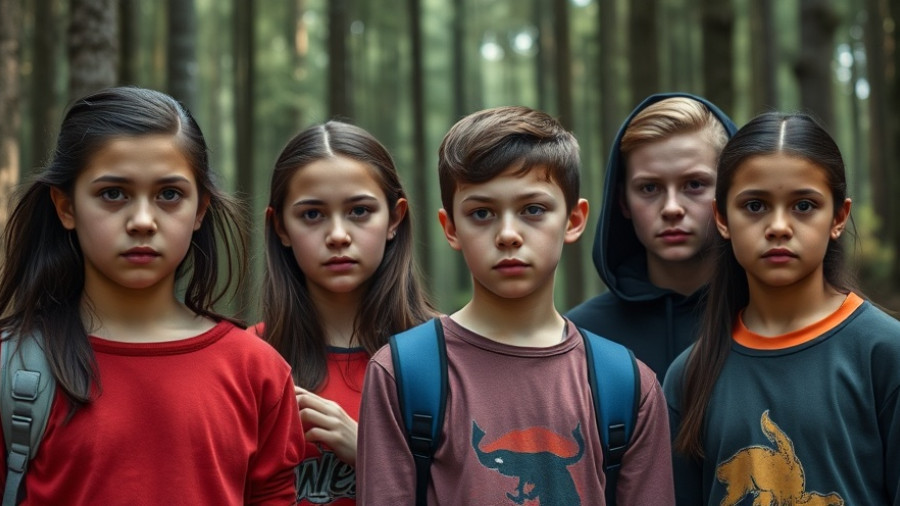
IT: Welcome to Derry's Unconventional Narrative
When HBO's IT: Welcome to Derry made its grand debut, many fans—including myself—expected the show to emulate the beloved yet familiar vibes of Stranger Things. However, the series quickly makes it clear that its narrative is not just another nostalgic homage to the 80s. Instead, it serves up a fresh take on terror that confronts viewers with unexpected brutality right off the bat.
A Familiar Opening, A Shocking Turn
Right from the start, Welcome to Derry introduces tropes that feel eerily similar to those of Stranger Things: the straightforward premise of a child’s mysterious disappearance, supportive friends embarking on a quest, and the ominous presence of a government lab lurking just beneath the surface. Nostalgic visuals and subtle nods to Steven Spielberg's era effortlessly reel viewers in, creating a comfortable sense of familiarity.
Yet, the show is not interested in simply following the paths laid out before it. Just as the audience grows soft in their expectations, Welcome to Derry kicks the door wide open with a shocking moment that almost immediately dismantles the comfort zone. Characters we feel are safe suddenly find themselves—quite brutally—snapped out of existence, reminiscent of horror classics yet distinctly promoting a narrative twist that separates it from its contemporaries.
Confronting Horror Tropes with Real Stakes
This series is a deliberate departure from the frustrating horror movie trope where adult characters dismiss the warnings of children. Indeed, it offers a refreshing perspective by shifting the narrative to focus on both kids and adults dealing with underlying themes of horrors that are both supernatural and societal. This narrative structure, showcasing a family overcoming the terror from outside and containing their own personal struggles, steers away from predictable outcomes.
The protagonists, portrayed by Taylour Paige and Jovan Adepo as Charlotte and Leroy Hanlon, bring a grounded perspective on the inherent fears of their 1962 setting. They challenge the gaslighting trope common in horror, not merely believing their son’s revelations, but emboldened by their understanding of societal injustices. This narrative choice enriches the series with an emotional depth, setting it apart from typical horror shows.
Derry's Legacy: More Than Just a Scary Town
The town of Derry itself gets a re-examination in this adaptation, revealing deeper layers of history, prejudice, and systemic issues that contribute to the terror perpetuated by the monster Pennywise. It’s a bold course correction for the adaptations of Stephen King’s works and acknowledges the conversation around social topics that often remain in the shadows. Such a perspective encourages an audience to reflect on how real-world fears, such as racism and acceptance, are woven intricately into the fabric of horror.
Why IT: Welcome to Derry Matters
While Stranger Things gallantly celebrates its 80s inspirations, Welcome to Derry moves forward with unsettling originality. In its first episode, the show firmly asserts that it’s more than a mere mirror to a pop culture titan; it stands as an authentic adaptation reflecting on societal challenges blended seamlessly with horror. For fans of Stephen King's work, it promises to be an experience that dives deeper into the meaningful intersections of fear and societal issues.
Final Thoughts: The Adventure Begins
As the series progresses, it’s clear that this is not simply a tale of children facing a haunted past; it is about the enduring legacy of Derry and the challenges that come with confronting one's deepest fears, both supernatural and social. Welcome to Derry is poised to be a thrilling ride that celebrates King's depth and complexity through a narrative lens that feels both authentic and poignant.
 Add Row
Add Row  Add
Add 




Write A Comment